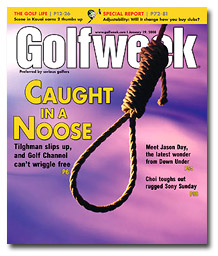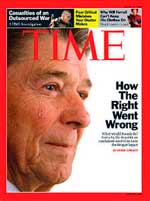Category: Ethics
-
Was she there, or wasn't she? Removing objects from photos with GIMP and Resynthesizer
Resynthesizer is a very cool GIMP plugin I have been playing with for a few days. It can be used for some “magic” effects: create seamless backgrounds, transfer textures from one image to another and remove objects from images. Check it out here.
-
On the other side: ethics and toning
There is also a gray area about what is ethical and what isn’t. There are the biggies that are fundamental–like cloning someone/something in or out of your frame. But to me the big part of ethics has to do with intention and misleading. Statements like “If I can do it in a darkroom, it’s okay”…
-
Snapper stripped of top award – People's Daily Online
The Photojournalist Society of China (CPS) has stripped a photographer of a top award given for his picture of a vet vaccinating pigeons in front of Sophia Cathedral in Harbin, saying it was a fake, Beijing Youth Daily reported on Friday. Check it out here.
-
EastSouthWestNorth: Confessions of Veteran Photojournalists
Veteran Journalists Confess To Directing Photos. March 19, 2008. Li Zhencheng graduated in 1963 from the Department of Photography of the Changchun Academy of Cinematography and later became a photojournalist at Heilongjiang Daily News. In the 1980’s, he went to teach at the Department of Journalism at the China People’s Police University. As a professional…
-
Photoshop Disasters: Diario Sportivo AS: I Wasn't Expecting The Spanish Inquisition
Our chief weapon is Photoshop… and cloning… cloning Check it out here.
-
A Lineup of Recent Literary Fakers – Books – New York Times
When the news emerged this week that Margaret Seltzer had fabricated her gang memoir, “Love and Consequences,” under the pseudonym Margaret B. Jones, many in the publishing industry and beyond thought: Here we go again. The most immediate examples that came to mind were, of course, James Frey, the author of the best-selling “Million Little…
-
John Nack on Adobe: No, seriously, you *do* suck at Photoshop…
Heh–in the vein of sites like AwfulPlasticSurgery.com, now we’ve got the Photoshop Disasters blog–chock full of image manipulation mishaps Check it out here.
-
Fallout From a Literary Fraud – Love and Consequences – Margaret Seltzer – Margaret B. Jones – New York Times
Geoffrey Kloske, publisher of Riverhead Books, the unit of Penguin Group USA that released the book, by Margaret Seltzer, under a pseudonym, Margaret B. Jones, said on Tuesday that there was nothing else that he or Sarah McGrath, the book’s editor, could have done to prevent the author from lying. “In hindsight we can second-guess…
-
Author Admits Acclaimed Memoir Is Fantasy – New York Times
In “Love and Consequences,” a critically acclaimed memoir published last week, Margaret B. Jones wrote about her life as a half-white, half-Native American girl growing up in South-Central Los Angeles as a foster child among gang-bangers, running drugs for the Bloods.Margaret B. Jones is a pseudonym for Margaret Seltzer, who is all white and grew…
-
Researchers Look to Spot Photo Hoaxes – Wired
A growing number of researchers and companies are looking for such signs of tampering in hopes of restoring credibility to photographs at a time when the name of a popular program for manipulating digital images has become a verb, Photoshopping. Adobe Systems Inc., the developer of Photoshop, said it may incorporate their techniques into future…
-
EastSouthWestNorth: Top 10 News Photo Of The Year Was Faked
: “This is a photograph that everybody is familiar with. When I first saw it, my eyes lit up: the Tibetan antelopes and the train on the Qinghai-Tibet railroad appeared simultaneously in the eye of the camera. This was such a precise and decisive moment! Thus, this photograph was selected as one of the top…
-
Stretching the Truth Just Became Easier (and Cheaper) – New York Times
: “Reality is a lie,” said Mr. Baldassi. Automated tools like Mr. Baldassi’s are changing the editing of photography by making it possible for anyone to tweak a picture, delete unwanted items or even combine the best aspects of several similar pictures into one. Check it out here.
-
Is Reuters Publishing Fake Photographs? – mediabistro.com: FishbowlNY
: Something is fishy over at Reuters. The news wire has been caught distributing what appear to be staged photographs of Gaza power outages. Check out the two photographs above, taken by Gaza-based Reuters photographer Mohammed Salem. The captions for the pictures read “Palestinian lawmakers attend a parliament session in candlelight during a power cut…
-

Golfweek's Bland Rage – Blogs Design and Production @ FolioMag.com via PDN Pulse
: Lots of buzz online about the termination of editor Dave Seanor over this cover, which refers to a thoughtlessly stupid remark by golf anchor Kelly Tighman. It’s worth noting that the controversy over this cover is inextricably wrapped up in its conceptual quality. The insipid stock image brings nothing to the package that isn’t…
-
The Denver Post – House panel chides Bruce over kick
The Denver Post – House panel chides Bruce over kick: “A six-member Capitol panel voted unanimously today to recommend that the House censure Rep. Douglas Bruce for kicking a news photographer. The panel of lawmakers took testimony from four people — starting with the Rocky Mountain News photographer who was kicked in the leg for…
-
The Photographs Not Taken
The Photographs Not Taken: “The Photographs Not Taken is a collection of essays by photographers about the times they didn’t use their camera. “
-
House kicks up an investigation : Updates : The Rocky Mountain News
House kicks up an investigation : Updates : The Rocky Mountain News: “By resolution, the House said: ‘The special committee will investigate the circumstances surrounding the incident that occurred between Rep. Douglas Bruce and a member of the press on the floor of the House of Representatives on Jan. 14, 2008.’ House Republicans on Monday…
-
PAM PLATT: Flurry over a photo prompts explanation
PAM PLATT: Flurry over a photo prompts explanation: “Some of the comments registered by angry, offended and/or baffled readers: ‘Awful,’ ‘an embarrassment,’ ‘horrible decision,’ ‘poor judgment,’ ‘distasteful,’ ‘a mystery’ and ‘shame on you.’ I have to admit I was a little baffled by the response. Aren’t sports the province of the ubiquitous fanny pat? Aren’t…
-
Bruce kicks photographer, takes oath : Updates : The Rocky Mountain News
Bruce kicks photographer, takes oath : Updates : The Rocky Mountain News: “But his patience snapped as photographers from the Rocky and Denver Post crouched before him to shoot his picture as he stood for the House’s morning prayer. Bruce told Rocky photographer Javier Manzano ‘Don’t do that again,’ and then gave him a swift…
-

Time Gets Crafty With Weepy Reagan Cover
Radar: Is Time hoping a little controversy will draw attention to its redesign? The first new-look issue, on newsstands tomorrow, features what appears to be a photo of Ronald Reagan with a fat tear sliding down his cheek, illustrating the cover story, “How the Right Went Wrong.” A somewhat cryptic credit in small type on…
